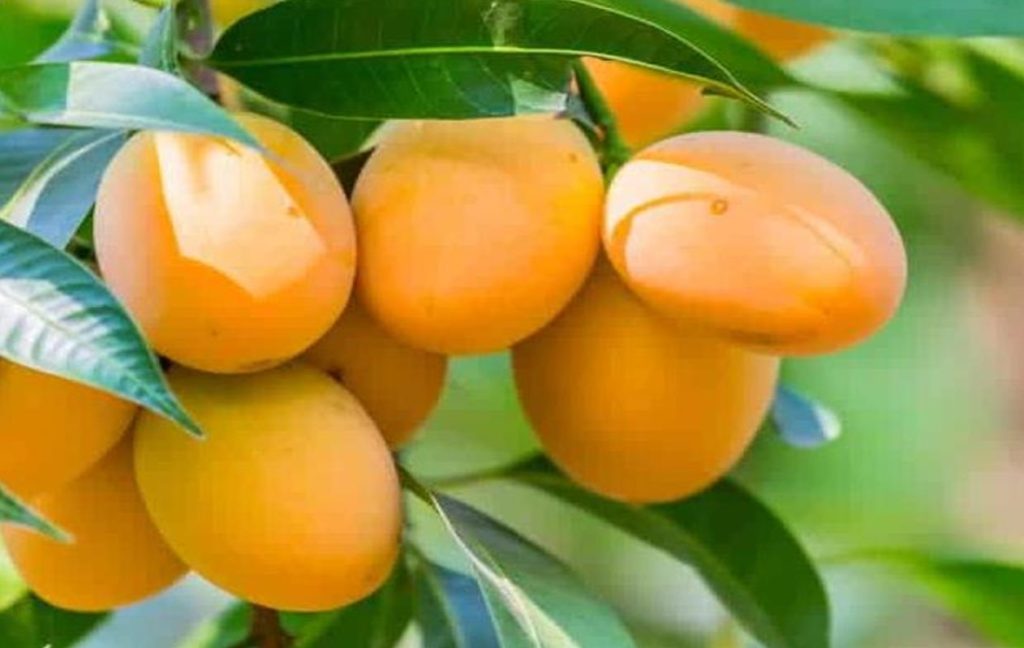Mango and Its Vitamin Benefits
Fragrant and juicy mangoes are delicious exotic fruits with real health benefits! They are particularly rich in antioxidants, fiber, and vitamin C. In juice, in a salad, as a main course, as a dessert, if the mango fulfills all our culinary desires, it is also very interesting for your health thanks to its numerous nutrients.
Mango is One of The Anti-Fatigue Foods
Mango is rich in minerals and vitamins, especially vitamin C (37 mg per 100 grams, or 46% of the recommended daily intake). It also has group B vitamins. Mangoes are helpful in the reduction of fatigue and boosts the immune system, which is useful in winter,” specifies Audrey Aveaux, dietician-nutritionist.
An Exotic Fruit That Helps Prevent Cancer:
Mango is rich in antioxidant substances that provides protection to the body’s cells against damage caused by free radicals. It contains polyphenols and other antioxidants, such as vitamin C and lupeol, which reduce the growth of cancer cells, particularly in prostate cancer.
Mango Helps Protect Your Heart:
Mangoes contains digestible fiber, including pectin. “These substances help reduce bad cholesterol levels, and we must not forget the presence of potassium, which helps to control heart rate and maintain normal blood pressure,” says Audrey Aveaux, dietitian-nutritionist.

Mango is An Ally For Good Digestion:
Chosen ripe, mango is easily digested because it contains less fiber than many fruits. “Its fiber content is only 1.7 g per 100 g on average. Its soluble fibers limit constipation. It also contains digestive enzymes which promote the digestion of proteins consumed at the same meal. »
When Should You Not Eat Mango?
If you take anticoagulants: eating mangoes too frequently can increase the risk of bleeding.
If you are allergic, an allergy to latex, birch, or Mugwort pollen can be associated with an allergy to mango (cross allergy).
How Do You Know If A Mango Is Ripe?
By the scent it gives off. When you lightly press on the fruit, it should be soft to the touch. On the other hand, you cannot trust its color: depending on the variety, mangoes can be green, yellow, orange… Preferably, choose varieties of mango that are not fibrous, such as Amélie with melting flesh. , or Kent, juicy and sweet.
Mangoes should be kept in a cool place above 6°C, not in the fridge, and for no more than two to three days as it spoils quickly.
To ripen a mango, wrap it in a newspaper sheet to release ethylene, a gas that accelerates its ripening.
How to Cut A Mango
To cut it into slices:
- Peel the mango.
- Place it vertically on the cutting board.
- Make thin slices on each side of the core until you touch it.
- Present the slices fanned out on a plate.
To Dice It:
- Cut the mango in half with its skin, slicing on each side of the stone.
- Collect the two halves of the fruit.
- Place them skin side down on the cutting board.
- Cut the flesh by making a grid, then press on the skin to round it out before placing it on the plate.
Need Help or Advice in Academic Writing
https://independent.academia.edu/shamsulIslam8
Would you like more advice? Do you have good practices to share? Please feel free to express yourself in the comments. Also, if you want help in writing content to drive more traffic and boost conversions, please get in touch through Contact our team or send your requirements here.
Read More:
KNOW THE BENEFITS OF LEEK | SLIMMING AND DETOX VEGGIE
KNOW BENEFITS OF APPLES NUTRITIONAL VALUE AND CALORIE COUNT
WHAT IS THE BEST DRIED FRUIT FOR YOUR HEALTH?
